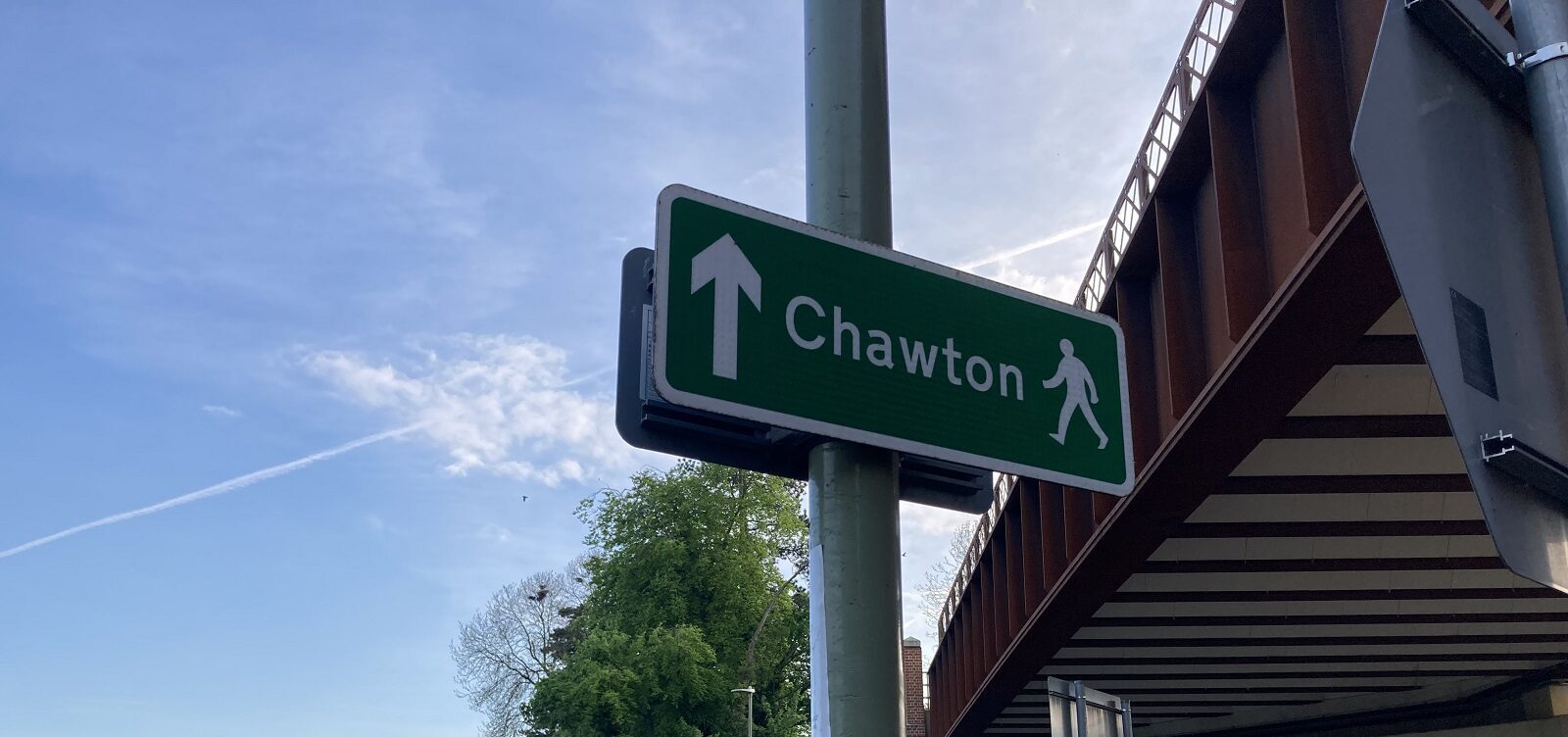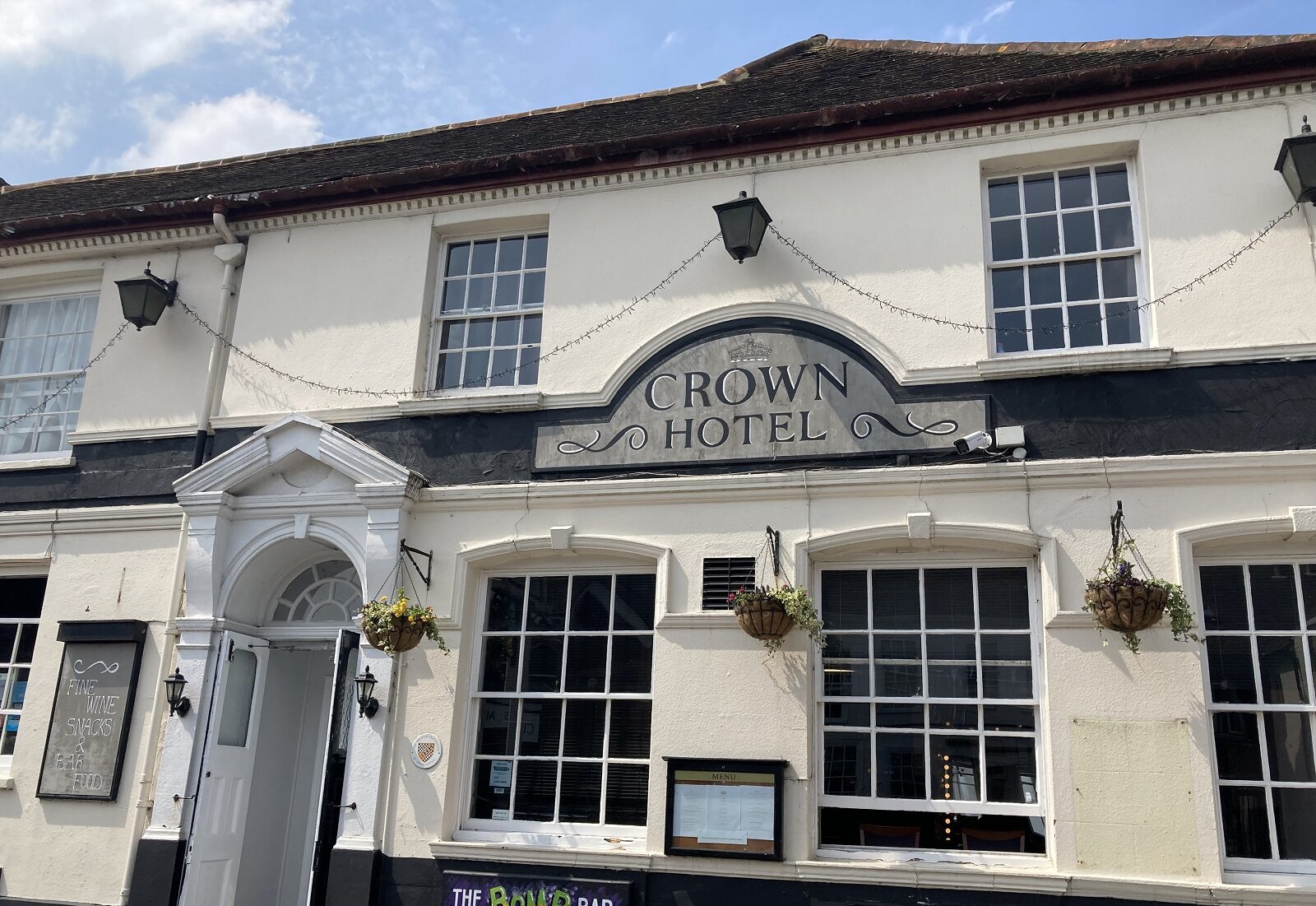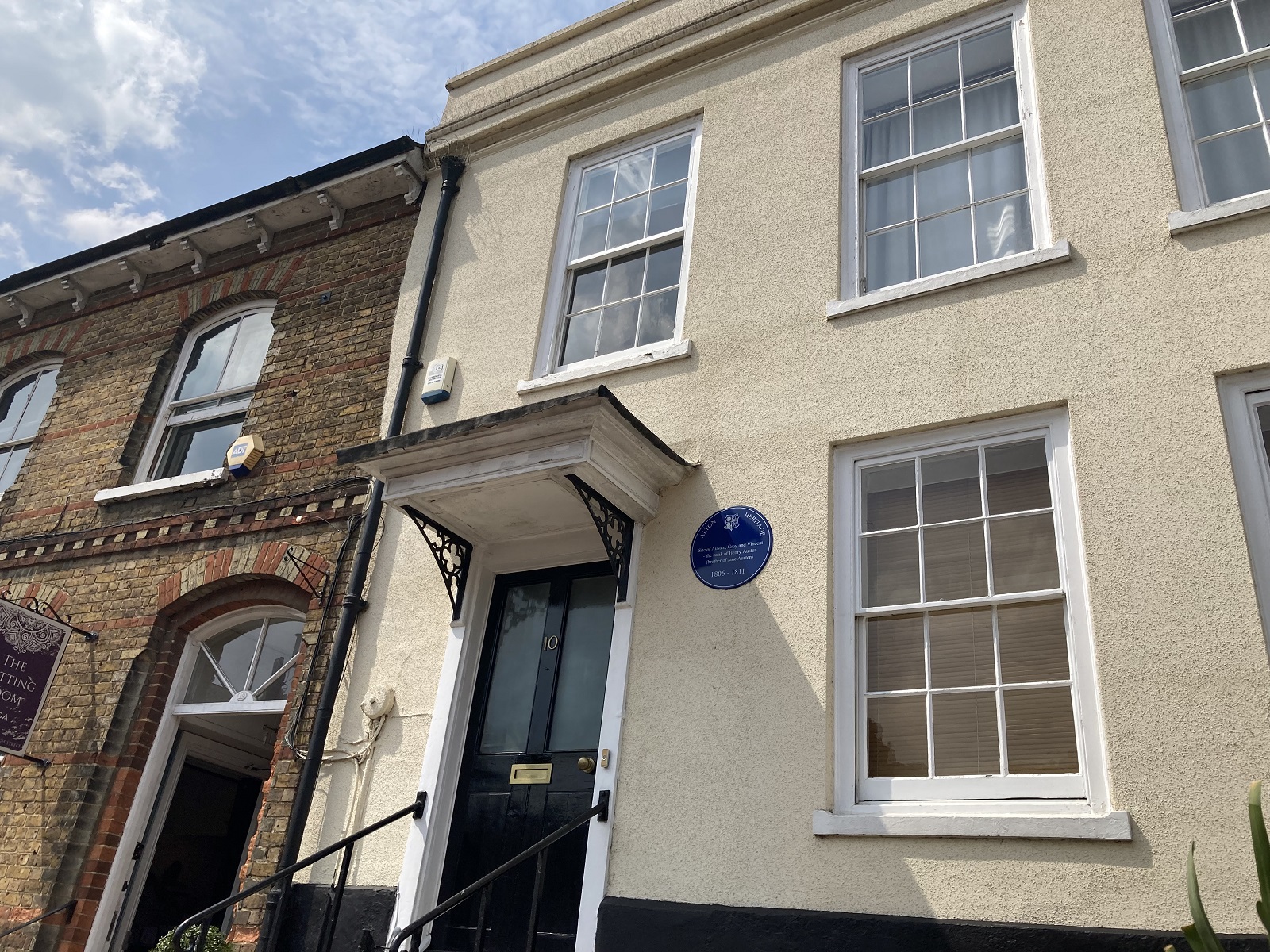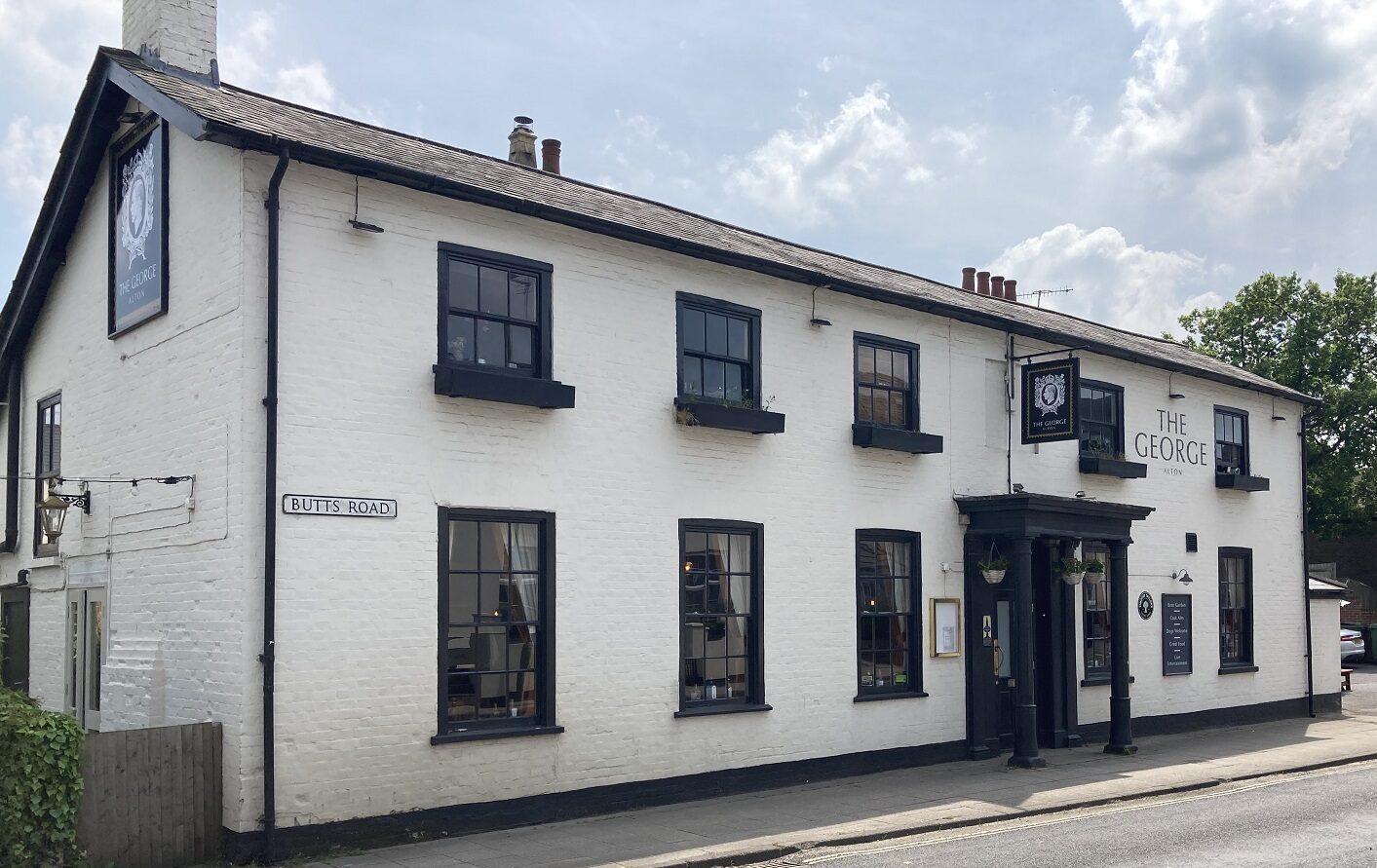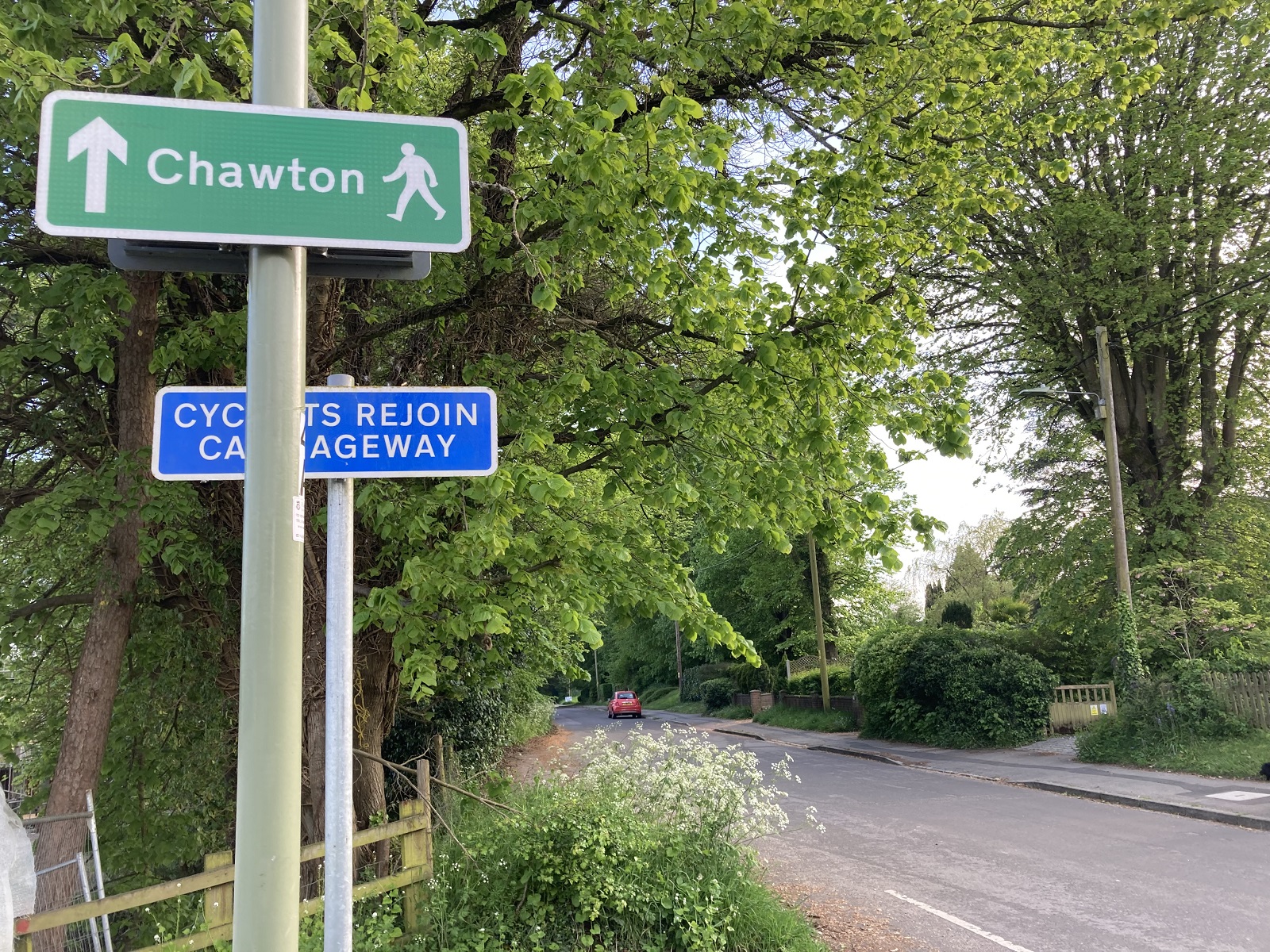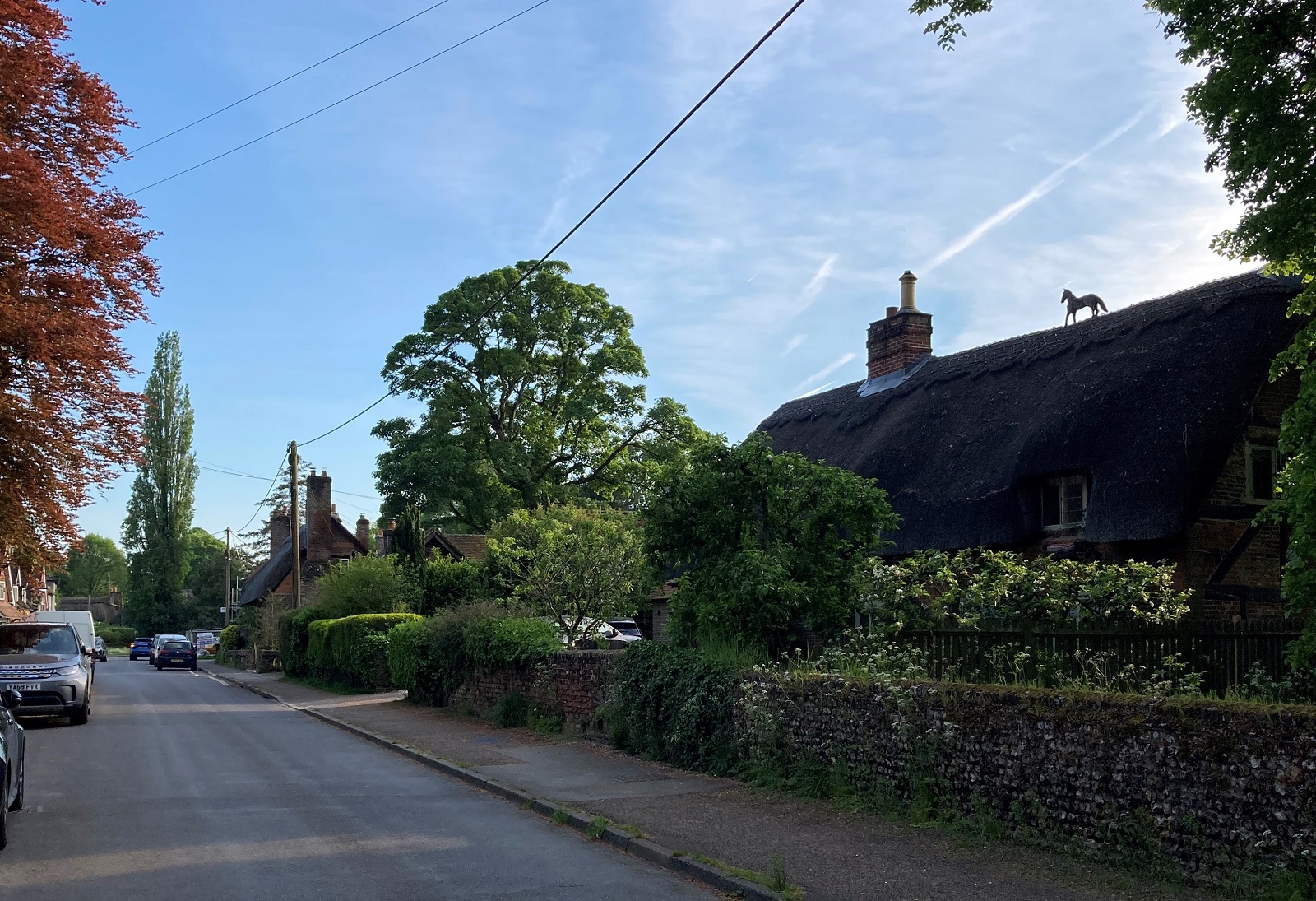Walking from Alton to Chawton
The walk from Alton station to Jane Austen’s House is 1.8 miles and takes approx. 30-40 minutes. It is a pleasant walk through the town and along a quiet lane, with plenty for an eagle-eyed Jane Austen fan to enjoy along the way!‘I had just left off writing & put on my Things for walking to Alton’
Jane to Cassandra, Thursday 6 June 1811
Beginning at Alton station, walk through the car park and up Paper Mill lane. At the top, turn left onto Normandy Street. From here, the walk is a straight line to Chawton!
Cross over the mini roundabout and on your right you will pass a square, solid-looking pub called The Crown Hotel that dates back to the early 1500s. It was owned by Jane’s brother Edward as part of his inheritance from the Knight family and may have inspired Jane when writing Emma. There is a Crown Inn in Highbury – ‘an inconsiderable house, though the principal one of the sort’ – where the ball takes place.
Tucked behind The Crown is The Allen Gallery, a small museum with an outstanding collections of ceramics – definitely worth a detour if you have time!
As the road slopes downhill, you will enter the High Street, full of attractive Georgian buildings that Jane would have known. On the left is the Curtis Museum, a local history museum exploring 100 million years of the region’s past, and the Assembly Rooms (opened in 1880, so sadly Jane did not dance here).
On your right you’ll pass no. 10, a cream-coloured building with a blue plaque – this was the premises of Henry Austen’s bank between 1806-1811.
Keep going straight down the High Street, passing on your left The Swan Inn which dates back to 1499 and which Jane knew well. Collier’s coach, which ran between London and Southampton, stopped at The Swan and Jane used it on at least one occasion to send luggage to and from home when staying with her brother Henry in London. The Swan was also the venue for the annual meetings of the Alton Book Society, of which Jane was a member.
Continue along the High Street until you reach the end, passing The White Horse on your right (another ancient inn, this one a timber-framed building with an 18th century façade). Keep walking straight along the main road, passing on your left The George Inn, which dates back to at least 1500.
In 1808, the year before the Austen women moved to Chawton, Jane’s mother fell ill while staying at an inn in Alton and it seems most likely that this would have been at The George which, like The Crown, was owned by her son Edward Knight.
Keep walking straight along the road until you come to a triangular green, edged with chestnut trees. Known as The Butts, historically this was the boundary between Alton and Chawton and was the site of archery practice, as decreed by Edward IV (1442-1483) that every town in England should have a Butts where target practice could take place. Jane would have passed here on her way to and from Chawton.
Walk along the side of the green and under the railway bridge – this is the Mid-Hants line, known as the Watercress Line, which opened in 1865 connecting Alton and Winchester. Its first chairman was Edward Knight, Jane Austen’s nephew. Today the line operates as a heritage railway, with steam trains running from Alton to Alresford.
Cross the road under the railway bridge – or walk up the road, past the French Horn (a pub dating to the eighteenth century that Jane would have known), to use the Pelican Crossing, and walk back on the other side.
Skirting the roundabout, take the first pedestrian turning and continue walking straight down the Winchester Road, a quiet lane with houses on one side. In Jane’s time, this was the main road between London and Portsmouth and would have been busy with coaches and carriages.
At the end, take the underpass which dives underneath the busy A31, and emerge in Chawton. Walk along the main village street, past some beautiful old houses where Jane would have paid calls.
Jane Austen’s House is at the end of the street on the right – opposite the Greyfriar, a sixteenth century coaching inn, and Cassandra’s Cup tearoom.
